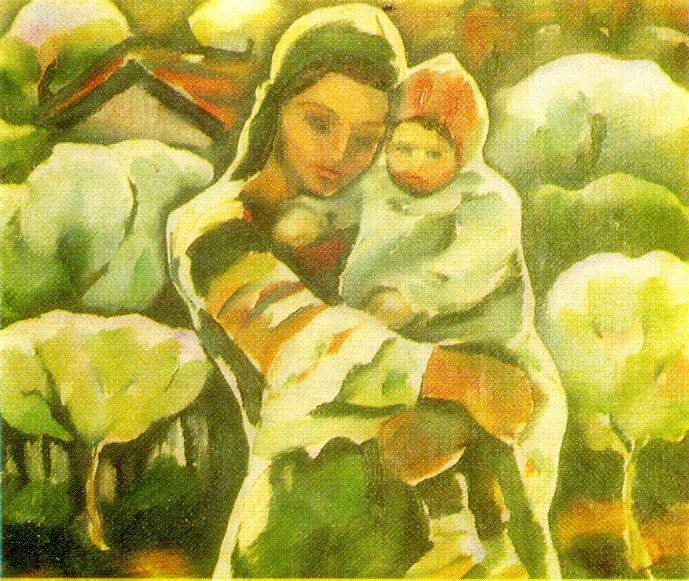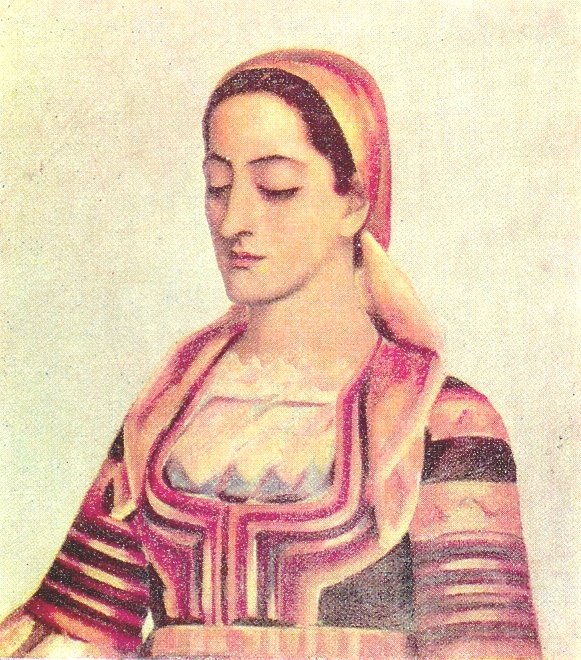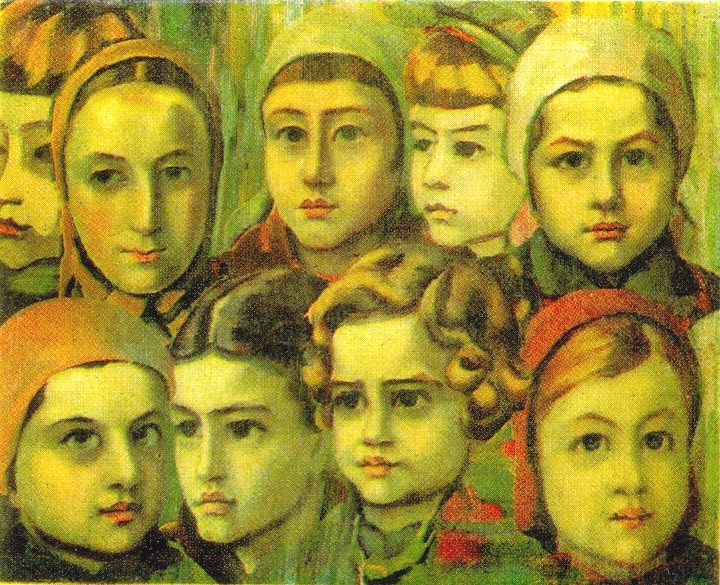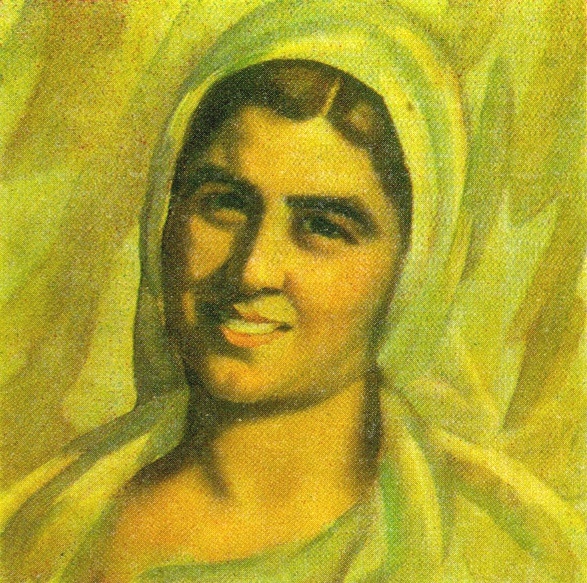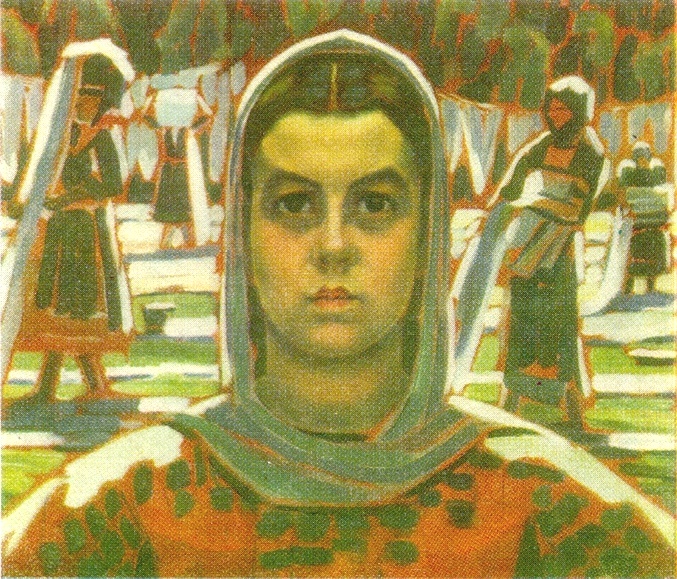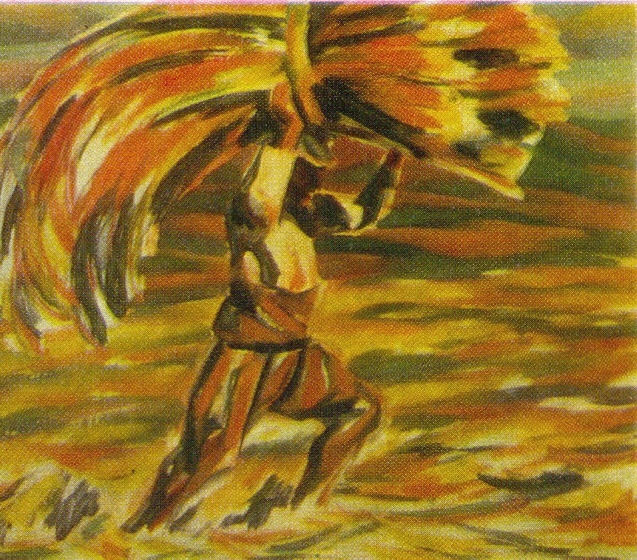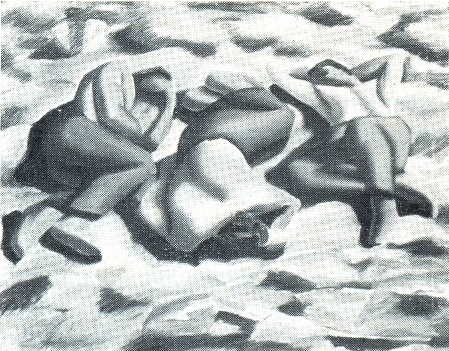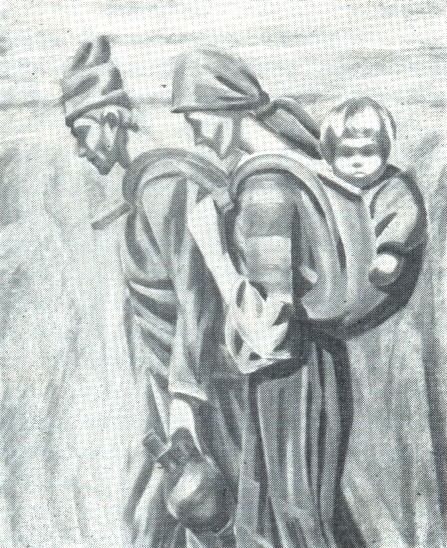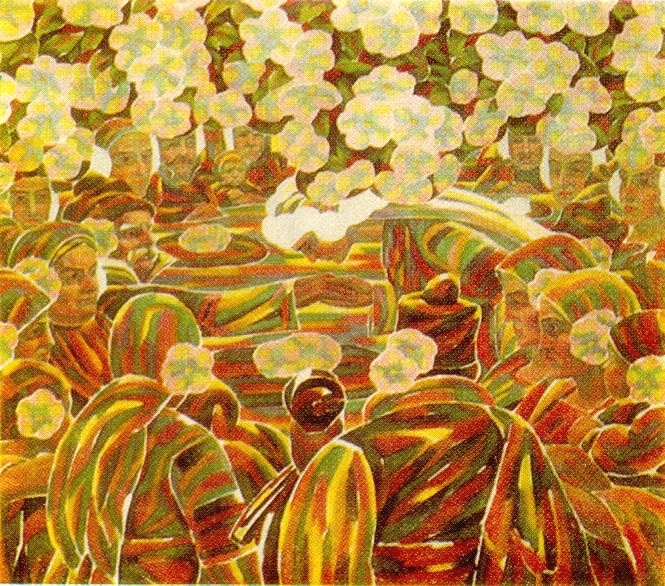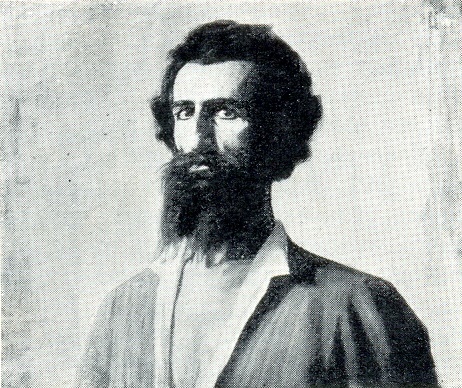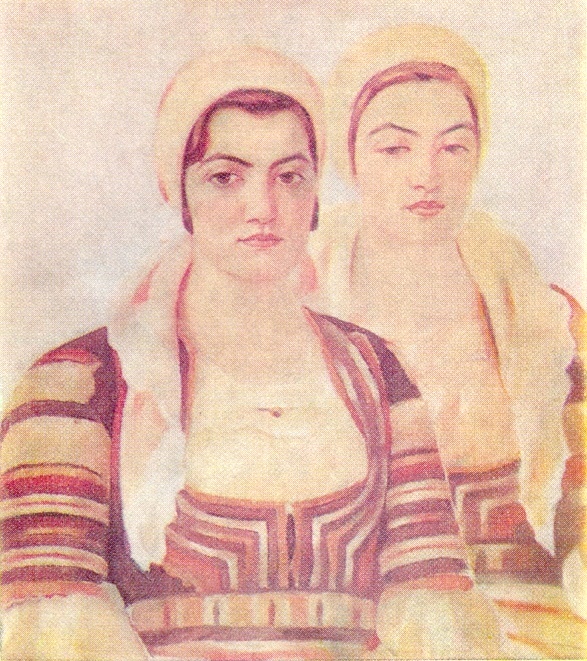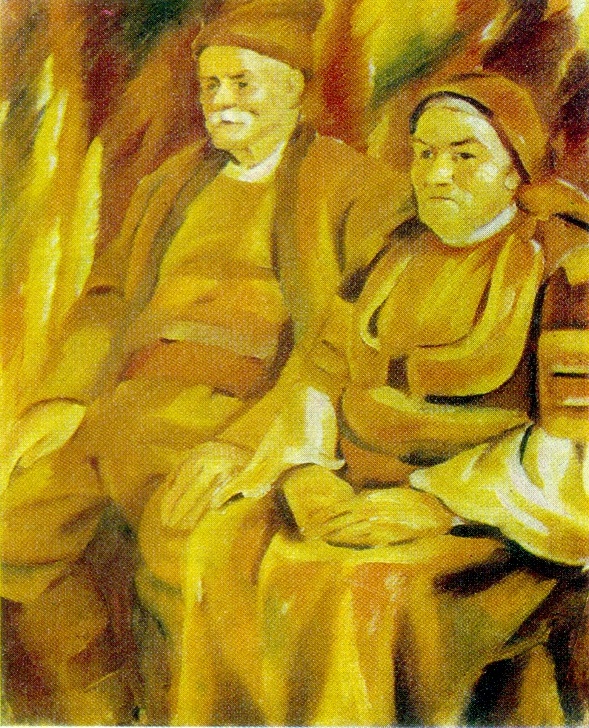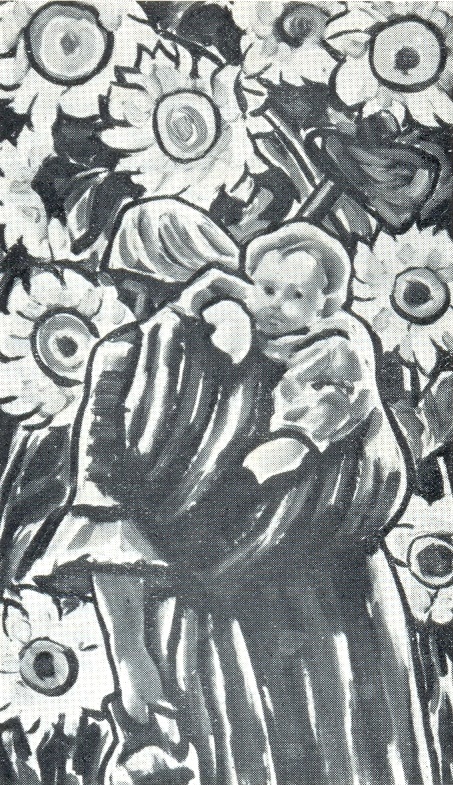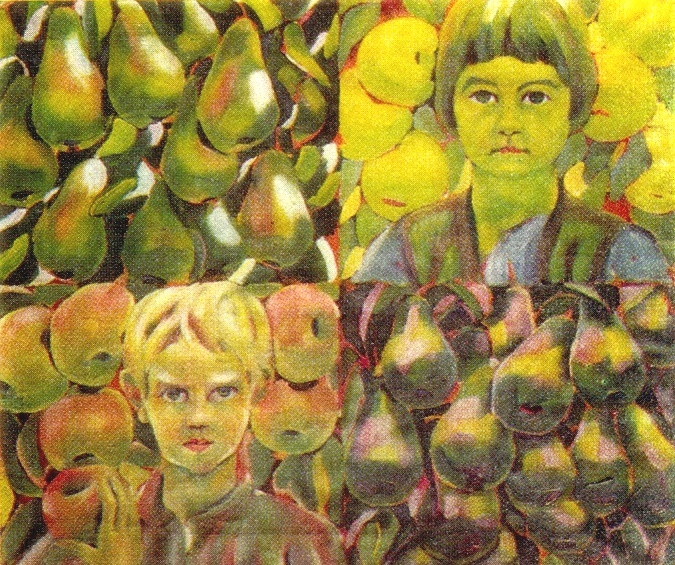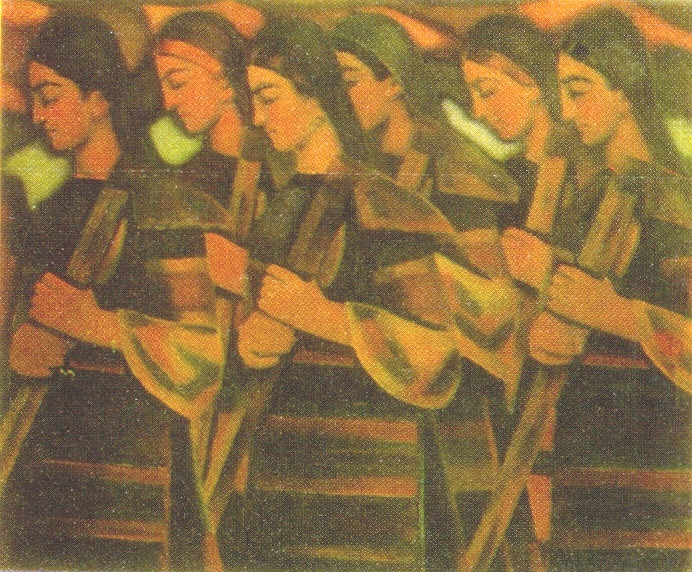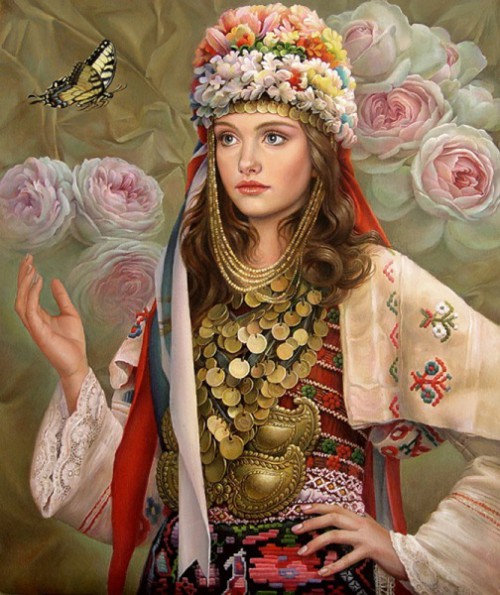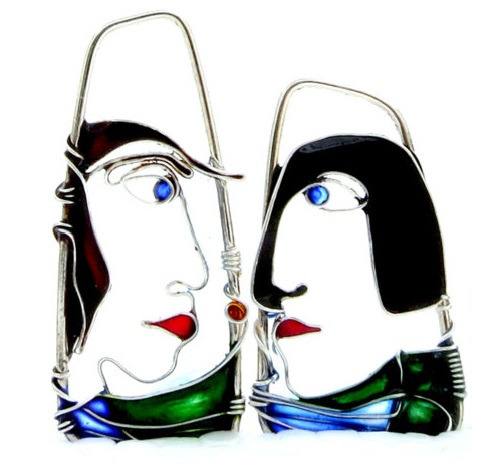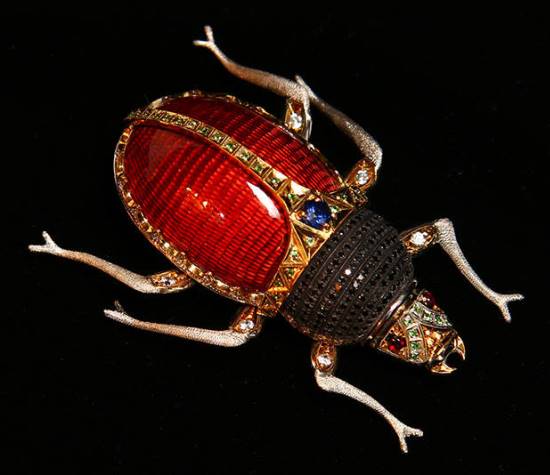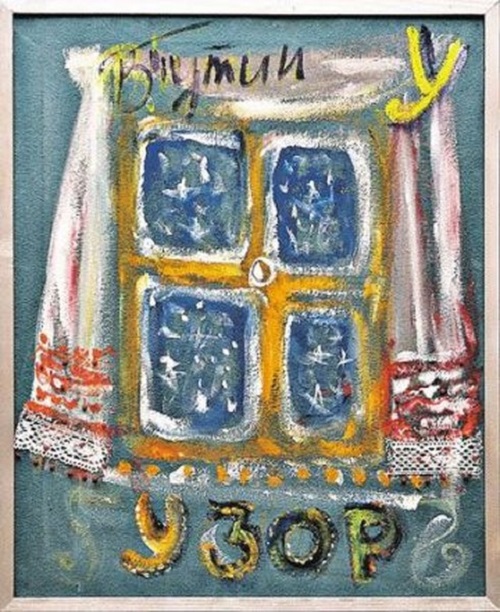Bulgarian artist Vladimir Dimitrov Maistor
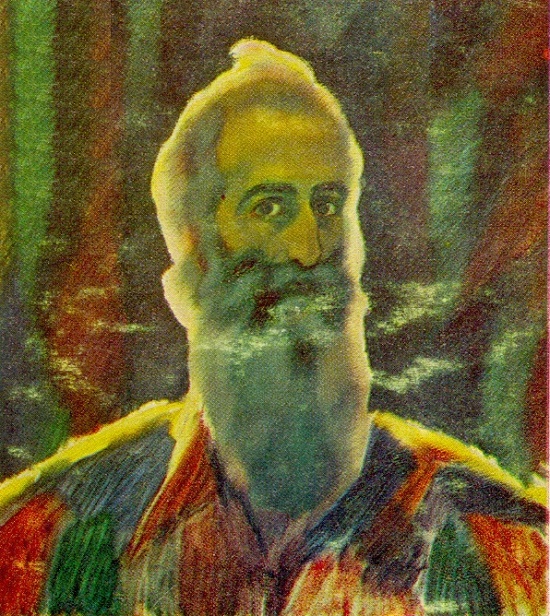
Self-portrait. 1921. Bulgarian artist Vladimir Dimitrov Maistor (1 February 1882 – 29 September 1960)
Bulgarian artist Vladimir Dimitrov Maistor
After Maistor became famous, he chose to live in poverty and gave away all of his possessions to poor people. Thus, he wore old clothes, gave up shaving and preferred only vegetarian food. In fact, many people thought him to be a saint and showed great affection for him even in his lifetime.
Born on February 1, 1882 in the village of Frolosh in the present Stankedimitrovsky district, just four years after the liberation of the Bulgarian people from the five-century Turkish yoke. Growing up in a poor peasant family, he learned early of poverty. One of his early works is a portrait of his father, created in 1907. All permeated with filial love, executed with picturesque ease, it gives an idea of the impetuous nature and deep observation of a person close to nature. By nature, the spiritual world and temperament, Maistor has much in common with the father. Meanwhile, his father, an inquisitive and gifted man by nature, played several folk musical instruments. Subsequently, his son not only sang in the field with reapers, at weddings and other village festivities, but he himself liked to play the folk string instrument.

Mother. 1919. National Art Gallery. Sofia. Painting by Bulgarian artist Vladimir Dimitrov Maistor (1 February 1882 – 29 September 1960)
According to the portraits performed by her son, the artist’s mother was a sad-looking person. Undoubtedly, it was a woman with a sensitive and responsive heart. In the sight of her kind, piercing eyes, is natural intelligence. Distinguished by a restrained elegiac sound, her portraits depict the typical nature of a peasant mother who has seen a lot in her life and has endured everything with silent heroism. These portraits are the embodiment of a tragedy, in them – the suffering and experience of the people during and after the First World War. In short, they act on the viewer as a simple human confession of the era.
Bulgarian artist Vladimir Dimitrov Maistor
In his youth Maistor visited Russia, and since 1909 he consistently visited Italy, France, England, Belgium, Germany, Austria, Turkey, Poland, and America. In the art galleries of Moscow, Petersburg, Kiev, Odessa, Rome, Venice, Paris, London, Brussels, Berlin, Dresden, Munich, Vienna, Warsaw, Wroclaw, and New York he got acquainted with the heritage of world art. Contact with the works of great masters of different nationalities and eras greatly contributed to the development of his aesthetic criteria.
In 1903 he became a supernumerary student in the then School of Drawing, and later turned into the State Academy of Arts. Already a student, he shows his talent, participates in competitions and receives awards. It was then that he got a nickname Maistor (Master). After graduation from the school in 1910, he became a teacher at a commercial gymnasium in Svishtov.
This noble man, the present glory of Bulgarian art – in his youth had to take part in wars. After experiencing the hardships and horrors of the war and witnessing the bloodshed, Vladimir Dimitrov took up the ideas of proletarian internationalism by the end of his life. Bulgarian supporters of peace sent him as their delegate to the Congress of the World Peace Council in Wroclaw, where he met with outstanding figures of science and arts, including Pablo Picasso.
On his return from the First World War, he set off on a journey to visit European art centers. Quenching the thirst for contact with great art, he is gradually freed from the oppression of horrors experienced on the front. In 1922, Maistor arranges an exhibition in Sofia, and two years later goes to America. There he spends only two and a half months, having learned in this short time the shameless egocentrism of the New World …
Bulgarian artist Vladimir Dimitrov Maistor
Since then, in the spring, summer and autumn he undertakes creative trips to the villages of the Kyustendil region. There, Maistor gets acquainted with the prototypes of his future artistic images. With reapers in the fields, fruit pickers, fields trembling in the haze, a hot summer sky, views of the surrounding mountains, evoking ideas about ancient legends and ancient myths … In this tense atmosphere of the laborer who gives birth to bread, he lives and takes part himself in harvest, shares with the reapers their modest meal … Watching and studying, he immediately works on a canvas, mounted nearby …
The same connection with the land and the people continues even in the days when gardens blossom, when gardeners pick cherries and peaches. Apricots, pears, apples … in whatever village he is, in Shishkovtsy or in the Dive, he always finds beautiful models of women. And there is nothing strange in that, no matter how much Maistor traveled to other countries, he never forgets his countrymen and again returns to them for creative work on native soil. This is his constant connection. And what he does outside his homeland – in Constantinople, Syracuse, Rome – only episodes in his great hard work.
Vladimir Dimitrov-Maistor joined the Bulgarian painting with his face, with his feelings, with his national philosophy, which expresses everything characteristically Bulgarian, and universal.
Source
Illustrated album “Vladimir Dimitrov Maistor (1882-1960)”. Sofia-press. 1968
